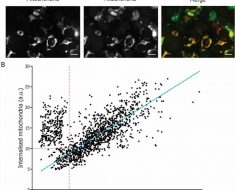Long-held assumptions that stepfathers are far more likely to be responsible for child deaths than genetic parents have been challenged by researchers at the University of East Anglia (UEA).
Approximately 20 children in England and Wales are killed by their fathers each year — and stepfathers are recorded as the perpetrators in a quarter of these cases. So while very few stepparents pose a threat to their children, the numbers are still more than would be expected, given the relatively low proportions of children who have stepfathers.
However, findings from a new study led by psychologists at UEA suggest that differences in rates of child homicides by stepfathers and genetic fathers are considerably smaller than previous researchers have claimed, and that these differences are unlikely to be explained by a biological relationship. The results indicate that the relative ages of fathers implicated in these crimes is more significant than whether they are the biological father of the child.
The researchers, from UEA’s School of Psychology and Norwich Medical School, and the Department of Sociology, University of Essex, reviewed data from the UK Home Office Homicide Index between 2000 and 2015 and compared it with detailed population data from three large surveys for the same period.
Their findings, published in the Journal of Experimental Psychology: General, cast doubt on the so-called ‘Cinderella effect’, a theory first proposed by psychologists in the 1970s, which suggests there is a direct link between step-relationships and child abuse or homicide. Those supporting the theory claim stepfathers have no genetic reason to invest parental resources in a child they are not biologically related to and so they are more likely to maltreat, abuse or even kill these children.
But previous studies into child homicide only considered figures from children aged between 0 and 5 years. The UEA and Essex team widened the age range to look at children between birth and 17 years and found only a small difference between stepfathers’ and genetic fathers’ rates of homicide.
Significantly, the team also looked at the ages of the fathers implicated in child homicides, an aspect also not considered in previous studies. They found that most men convicted of these crimes are relatively young, and this was true of both stepfathers and genetically related fathers.
“In general, the data indicates that younger fathers are more likely to abuse or kill their children than older fathers, regardless of whether they are stepfathers,” said Dr Gavin Nobes, who led the study.
“Also, the population surveys show that stepfathers are, on average, much younger than genetic fathers. This means that the Cinderella effect can be at least partly explained by stepfathers’ relative youth, rather than not being genetically related to their victims.
“There are many possible reasons for the link between parental age and child maltreatment — young parents are more likely to be on low incomes, perhaps less well-educated and possibly less equipped to cope with the stresses of parenthood.”
Another reason the Cinderella effect continues to attract attention is that individuals responsible for violence against children are sometimes recorded as a ‘stepfather’ for convenience, even when they are not. Many may be short term or casual partners of the mother, with no significant relationship to the child, and not even living with them.
The researchers say a message for policy and practice is to identify and support families when both the father and child are young — particularly in the first year of their relationship — and when the father, or mother’s partner, does not live with the child. “Child abuse researchers and social workers already understand that there are many complex causes of child abuse and these can be extremely difficult to predict,” said Dr Nobes.
“Our research offers a fresh perspective on the available data which could help practitioners and policy makers decide where to channel resources when supporting families. In particular, rather than assuming that stepfathers are more dangerous than genetic fathers, other factors — such as both father and child being young, and their not living together — are actually better predictors of whether a child is at risk of being abused or killed.”
Source: Read Full Article





